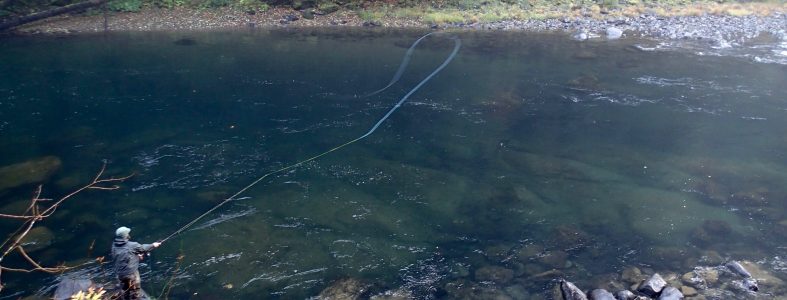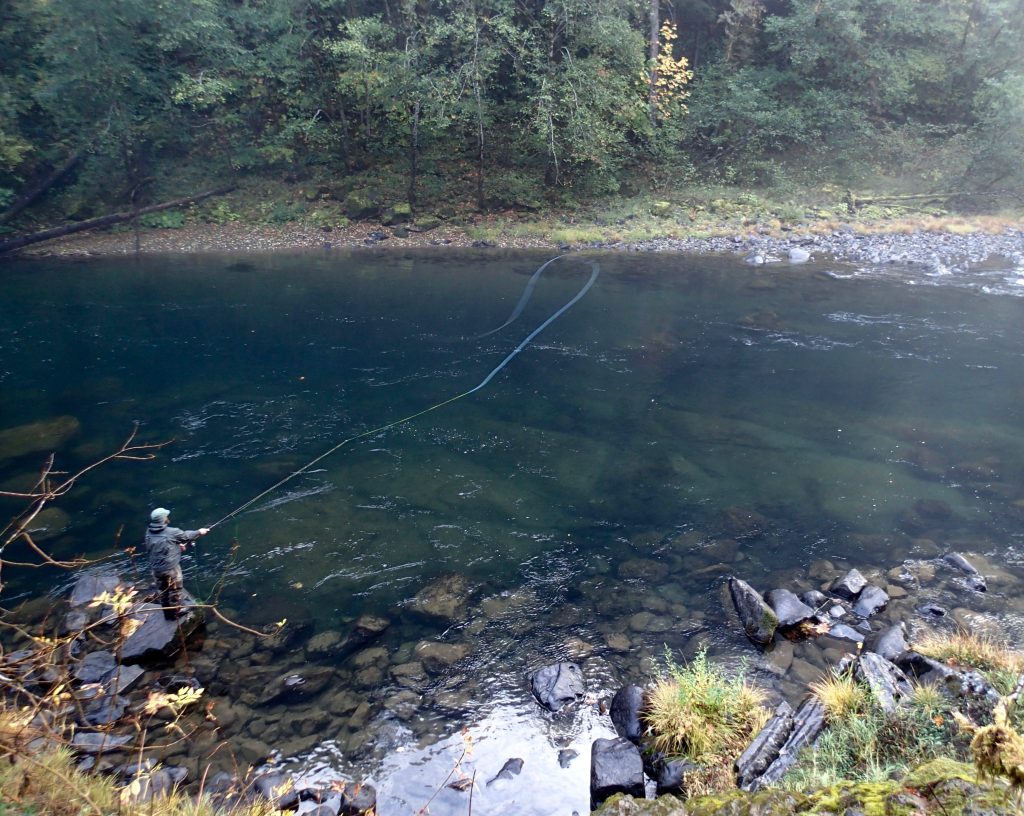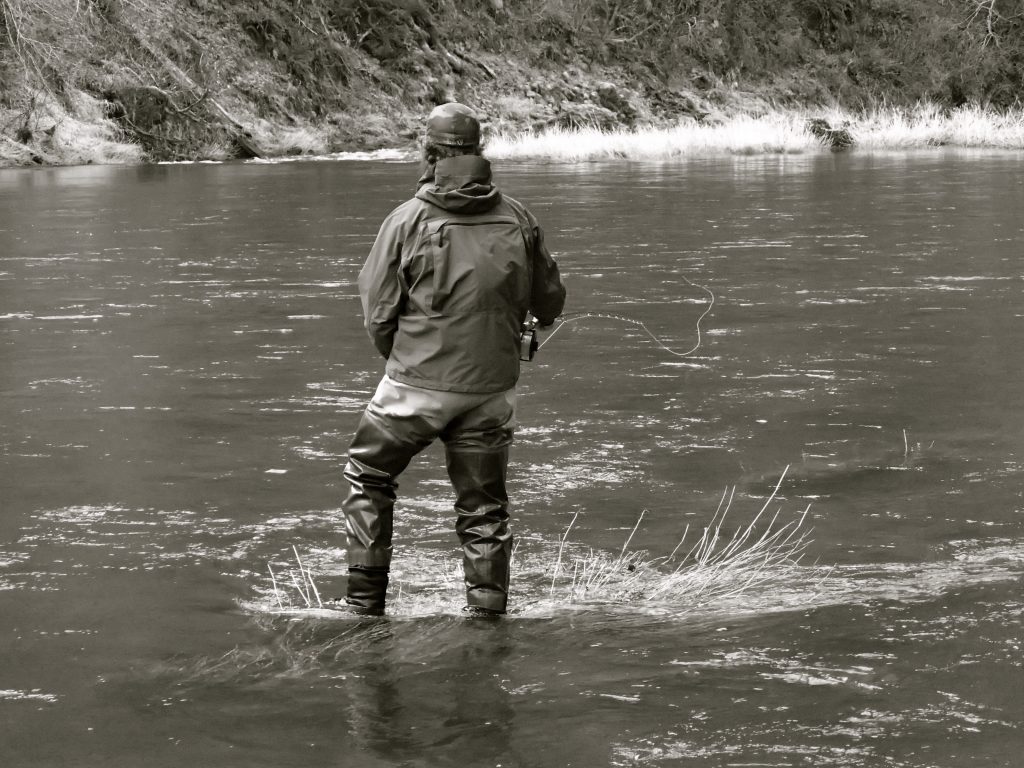
Simplify Your Spey Part 2: Swinging the Run, by J. Lusher

Alright, you’ve got your rod set up and things are feeling good. Its time to fish!! The basic method for swinging a run effectively is the same winter or summer. In the winter we might look for slower water but the great runs have the same characteristics. Water that is somewhere in that walking speed range, 2-6 ft in depth, and full of good structure. Lets swing it!
We are at the head of a juicy looking run. Start with the tip barely out of rod and cast it. Let it swing all the way to the bank, to the hangdown. As long as your fly is moving, your fishing. By the time your head is out you should have swung somewhere around 5-7 times. Strip out two feet of line or so, cast and let it swing to the hangdown again. Repeat until you have a comfortable length of line out and begin your step down.
Let’s talk about a comfortable length of line. This isn’t your farthest cast ever, this is a cast you can make successfully eight out of ten times. Your line should come tight on completion of the cast and be fishing immediately. Don’t cast and then feed 10 feet of line out before the swing starts, this is all lost fishing time. Cast your line out tight, perform your pull back mend if necessary, and let it swing. Swinging flies catch fish, other stuff doesn’t. The more time your fly is in the water fishing, the better your chance of connecting with a fish. The general rule for stepping down a run is 2 feet, about the length of a steelhead. After every cast, move two steps down the run and cast again. As double hand rod aficionados, we sometimes get lost in the cast, it feels good to cast far! Most fish however are caught in that last third of the swing, somewhere within 40 feet of the bank.

The longer your cast, the less effective it is swinging close to the bank, choose a happy medium. Fish the run from top to bottom, start a little higher than you might think, and fish a little lower. Every run fished is a learning experience. Enjoy!






No comments yet.